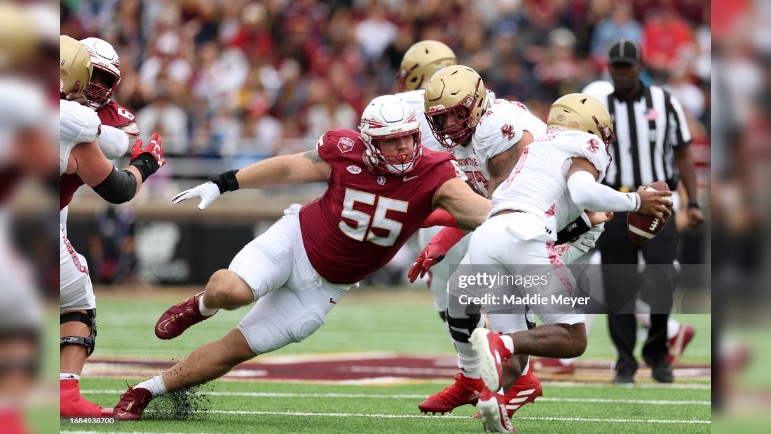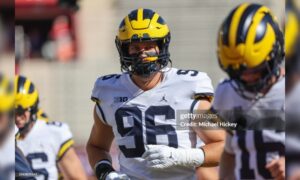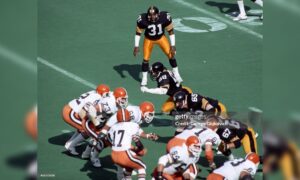For what feels like forever, we know the Pittsburgh Steelers have had a “type” along the defensive line, specifically at defensive end. Big, long, and strong. Players who were at least 6-4, 300 pounds, with at least 33-inch arms. Aaron Smith. Brett Keisel. Cam Heyward. Stephon Tuitt. That’s been their mold and model.
And that might be changing.
The reality is, and Pittsburgh could be realizing this, is those players are hard to find. Maybe they’re not extinct, but they’re on an endangered list. There are conservation projects for the prototypical 3-4 defensive end; be sure to donate today.
What the Steelers used to do was take 4-3 defensive tackles from the college game and kick them out to defensive end. Those days are over. The 4-3 d-tackle today is undersized. He’s smaller and quicker, needing to rush the passer, chase mobile quarterbacks, and help defend the perimeter. The old-school player who came in at 6-4, 310 pounds with 34-inch arms now tips the scales at 6-1, 285 pounds with 32-inch arms. And given how few teams play a 3-4 front, the Steelers aren’t left with many options.
Which means something must change. Pittsburgh might be doing that. This offseason, they signed veteran DL Dean Lowry. He’s tall and heavy enough but has 31-inch arms, severely reduced length typically unseen in a Steelers’ base end, the role in which he’ll play. Granted, he’s not a draft pick, and evaluating him off actual NFL tape reduces projection but still, his length is an outlier.
In the draft, the Steelers have shown interest in several defensive linemen. Some fit the “typical” mold, like LSU’s Maason Smith. Others have exceptions. There’s Florida State DT Braden Fiske who called Pittsburgh among the teams to show the most interest in him, who carries only 31-inch arms. Yesterday, the Steelers brought in Iowa’s Logan Lee whose length measures in at just 32 1/4 inches. Even Missouri’s Darius Robinson has a tweener aspect to him, and he actually made the Steelers’ transition, previously a defensive tackle the Tigers kicked out to end in 2023.
Similar can be said with actual Steelers picks. DeMarvin Leal broke the mold. And Isaiahh Loudermilk, though tall and from Wisconsin’s system, had below-average length. Those aren’t the poster children for “this model works,” but it’s proof that finding the perfect Steelers’ end is difficult.
Ideally, Pittsburgh probably wants more of the same. The guys built like Heyward. And they could come away from the draft with someone who fits the mold. Maason Smith, Clemson’s Ruke Ohorhoro, Baylor’s Gabe Hall. But the Steelers seem open to widening their horizon and, at the least, requiring less length for their front lines. Their system has shifted over the years. Their ends don’t often play a true five-tech, outside shade of the offensive tackle. They play three-tech, between tackle and guard, more frequently. They rush upfield and one-gap far more often than they used to, two-gapping and run-stuffing.
The model has changed. The college game sure has. And so might the Steelers’ defensive line benchmarks.








